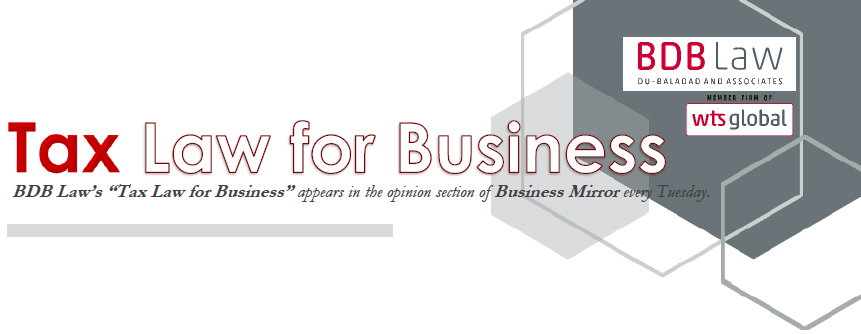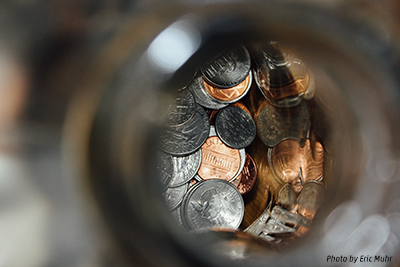Atty. Irwin C. Nidea, Jr. discusses why receiving a collection letter from the BIR must not be taken lightly as well as the winding remedies of collection cases that must be aligned.

BIR Collection Letters and Painkillers
By Atty. Irwin C. Nidea Jr.
 IT pains me when clients ask for help and my hands are “almost” tied. This happens when clients “self-medicate” and are clueless of the remedies available to them and the jeopardy that their companies are exposed to. When clients present to me collection letters from the Bureau of Internal Revenue (BIR), i.e., Preliminary Collection Letter (PCL), Final Notice Before Seizure (FNBS), Warrant of Distraint and Levy (WDL) or worse, Notice of Garnishment (NG), I know that a pain reliever will not do the trick.
IT pains me when clients ask for help and my hands are “almost” tied. This happens when clients “self-medicate” and are clueless of the remedies available to them and the jeopardy that their companies are exposed to. When clients present to me collection letters from the Bureau of Internal Revenue (BIR), i.e., Preliminary Collection Letter (PCL), Final Notice Before Seizure (FNBS), Warrant of Distraint and Levy (WDL) or worse, Notice of Garnishment (NG), I know that a pain reliever will not do the trick.
Some taxpayers do not know the urgency and the crucial decisions that they need to make after receiving these collection letters—that can either make or break them. A recent Supreme Court decision (GR 221780, March 25, 2019), illustrates how a wrong appreciation of collection letters can result in finality of a tax assessment.
In the said case, the taxpayer received a PCL, let’s say, on June 1. He was surprised to receive said notice since he did not receive any assessment notice before that. He did not receive a Preliminary Assessment Notice (PAN) nor a Final Assessment Notice (FAN). On June 15 or 15 days after receiving the PCL, he visited his BIR Revenue District Office to inquire about the nature of the PCL that he received. The BIR informed him that the PCL is authentic and that his worst nightmare is true. The BIR is after him and collection against him is now being enforced. Since he has no copies of the PAN and the FAN, he secured certified true copies of the same from the BIR.
Thirty days is about to lapse since he received the PCL on June 1. Knowing that he has only 30 days to appeal to the Court of Tax Appeals (CTA) on matters that it has jurisdiction of, he decided to file an appeal to the CTA on June 30. Was the taxpayer successful in protecting itself from the PCL?
"Some taxpayers do not know the urgency and the crucial decisions that they need to make after receiving these collection letters—that can either make or break them. A recent Supreme Court decision (GR 221780, March 25, 2019), illustrates how a wrong appreciation of collection letters can result in finality of a tax assessment."
 Unfortunately, the SC says no. The tax assessment has become final and executory because the taxpayer’s appeal to the CTA is premature. The taxpayer should instead have filed an administrative protest to the BIR within 30 days from receipt of the certified true copy of the FAN. In other words, instead of filing an appeal to the CTA on June 30, the taxpayer should have filed an administrative protest to the FAN within 30 days from June 15.
Unfortunately, the SC says no. The tax assessment has become final and executory because the taxpayer’s appeal to the CTA is premature. The taxpayer should instead have filed an administrative protest to the BIR within 30 days from receipt of the certified true copy of the FAN. In other words, instead of filing an appeal to the CTA on June 30, the taxpayer should have filed an administrative protest to the FAN within 30 days from June 15.
The SC says that by securing certified true copies of the PAN and the FAN, the taxpayer is effectively notified of the assessment notices. The appeal to the CTA is premature. And since the taxpayer was not able to file an administrative protest within 30 days from June 15, the tax assessment has become final and executory.
This case shows how vague the rules are with respect to the treatment of collection notices. Should they always be treated as decisions of the BIR that are appealable to the CTA? Apparently, the answer is no.
There are other scenarios that the cited case was not able to clarify, e.g., What if the taxpayer did not secure certified true copies of the PAN and the FAN, was it able to file its appeal to the CTA on time? What if instead of appealing the PCL, it waited for the FNBS or the WDL, will its appeal to the CTA be still considered on time? One thing is for sure though, in determining whether appeal to the CTA is proper, the unique circumstances of every case must be evaluated.
In order to simplify the collection process, the BIR recently issued RMO 35-2019 on July 18, 2019. The Commissioner realized that the soft approach in the enforcement of civil remedies to collect taxes no longer bears substantial impact in enhancing collection. Thus, issuance of PCL and FNBS is now a thing of the past. The BIR will now immediately issue WDL.
Taxpayers must now be more wary. It means that the BIR’s next move against them after the issuance of the WDL is garnishment or levy of their properties.
It also means that self-medication is over. It is time to let go of the painkiller.
The author is a senior partner of Du-Baladad and Associates Law Offices, a member-firm of WTS Global.
The article is for general information only and is not intended, nor should be construed as a substitute for tax, legal or financial advice on any specific matter. Applicability of this article to any actual or particular tax or legal issue should be supported therefore by a professional study or advice. If you have any comments or questions concerning the article, you may e-mail the author at This email address is being protected from spambots. You need JavaScript enabled to view it. or call 403-2001 local 330.



